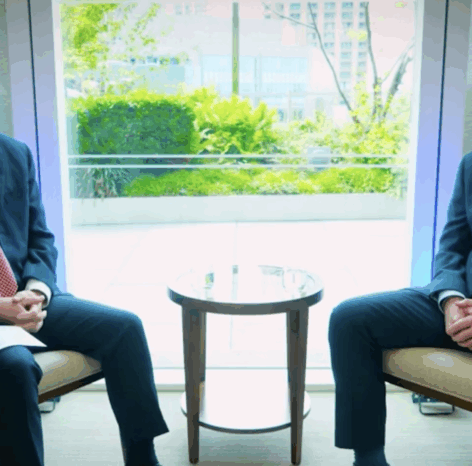Market Commentary – July 2025
11/08/2025
Key Themes Driving Currency Markets

Long Delayed Liberation Day
Global trade policy continued to steer the FX ship in July as the US completed or neared deals with major trading partners ahead of a “final” August 1 start date for reciprocal tariffs. Increased certainty on the timing and breadth of tariffs allowed the dollar to pick up some steam, although policy remains fluid and commitments tenuous. The die was cast in early July as the Trump administration sent out letters to trading partners communicating the size of the upcoming levies. Rates in the letters were largely in line with or slightly lower than Liberation Day rates, with the major exception being Brazil. Rather than the 10% communicated back in April, President Trump threatened a 50% tariff on Brazilian goods and called for an end to the judicial proceedings against Brazil’s former president Jair Bolsonaro.
Among the flurry of letters, ongoing US negotiations with the EU and Japan were top-of-mind for investors. The US and EU managed to avoid a potential trade war with an eleventh-hour deal that set tariffs on EU goods at 15%, down a touch from the 20% Liberation Day rate but half of the 30% rate threatened in the July letter to the EU. That said, the agreement is not finalized, and the EU continues to press for exemptions on certain industries such as wine and spirits. Further, some components of the “deal” lean toward nebulous commitments rather than a concrete framework, particularly the EU’s commitment to purchase $750 billion worth of US energy by 2028. Considering the EU imported just $65 billion worth of energy from the US in 2024, this suggests such a commitment is performative rather than substantive. The EU deal reveals a common thread in the US tariff negotiations, the propensity of the Trump administration to escalate before moderating, and the inclination of nations to negotiate the lowest possible rate in the hopes that the Trump administration moves on after declaring victory. The euro ultimately gave up ground to the dollar this month, but to a lesser degree than other G4 FX.
Yen on the Backfoot
The yen was the worst performer among G10 FX in July. The slide was underpinned by anxiety ahead of upper house elections, lingering trade deal concerns, and dovish communique from the Bank of Japan. After months of frustration, Japan managed to avert harsher tariffs, negotiating its respective tariff rate down to 15% from 25%. However, newfound political uncertainty following July elections cast doubt on the sturdiness of the agreement. Japan’s upper house elections resulted in the ruling LDP party losing its majority, plunging the party into a leadership crisis as it was reported Prime Minister Shigeru Ishiba may resign following the election defeat. The electoral setback for the LDP threatens continuity for the US-Japan trade deal as a leadership vacuum could delay implementation, reopen concessions, and rekindle tariff threats, undermining corporate capital expenditure plans on both sides of the Pacific. In the face of elevated uncertainty, the BoJ left rates unchanged at its July meeting. Despite upgraded inflation forecasts by the BoJ members, Governor Ueda signalled that the board would wait for clearer evidence on tariff effects, wages, and the fiscal situation after Ishiba’s minority government lost its majority in the upper house.
US Data Obfuscate Weakness
After a dismal June, the dollar partially rebounded in July as fiscal uncertainties ebbed, and growth and inflation data surprised to the upside. Early in the month, Congress passed the One Big Beautiful Bill Act (OBBBA), which primarily extended the Trump-era tax cuts and raised the debt ceiling alongside other expansionary adjustments. With the bill passed and a debt ceiling showdown averted, the dollar was able to enjoy a degree of restored policy confidence. That was quickly shaken, however, when President Trump resumed his offensive against Fed Chair Powell. A rumour that Trump was seeking to fire Powell sparked volatile trading, although Trump declared there were no imminent plans to fire Powell.
The dollar pared its early month gains before getting a boost late in the month following a better-than-expected Q2 GDP report and a warmer Core PCE reading. Q2 GDP printed 3%, beating expectations, but trade and inventory dynamics obfuscated weakness in private demand. Trade was the primary culprit as net exports added 5pp to headline GDP, an expected rebound from the near 5pp drag on Q1 GDP. When measuring GDP less imports, inventories and government spending aka “final sales to private domestic purchasers”, annualized growth was 1.2%. Despite underlying weakness in the economy, the FOMC elected to keep rates on hold at its July meeting, although two voters dissented and called for a 25bps rate reduction. Powell skewed hawkish in his presser, saying any future cuts would be moving rates closer to neutral rather than policy turning accommodative. The dollar stoked strength in the aftermath of the FOMC meeting as investors trimmed fed easing forecasts.
N.B.: This summary includes market events and currency movements up to end-of-July.
Please click here for additional information, including risk disclosures.

